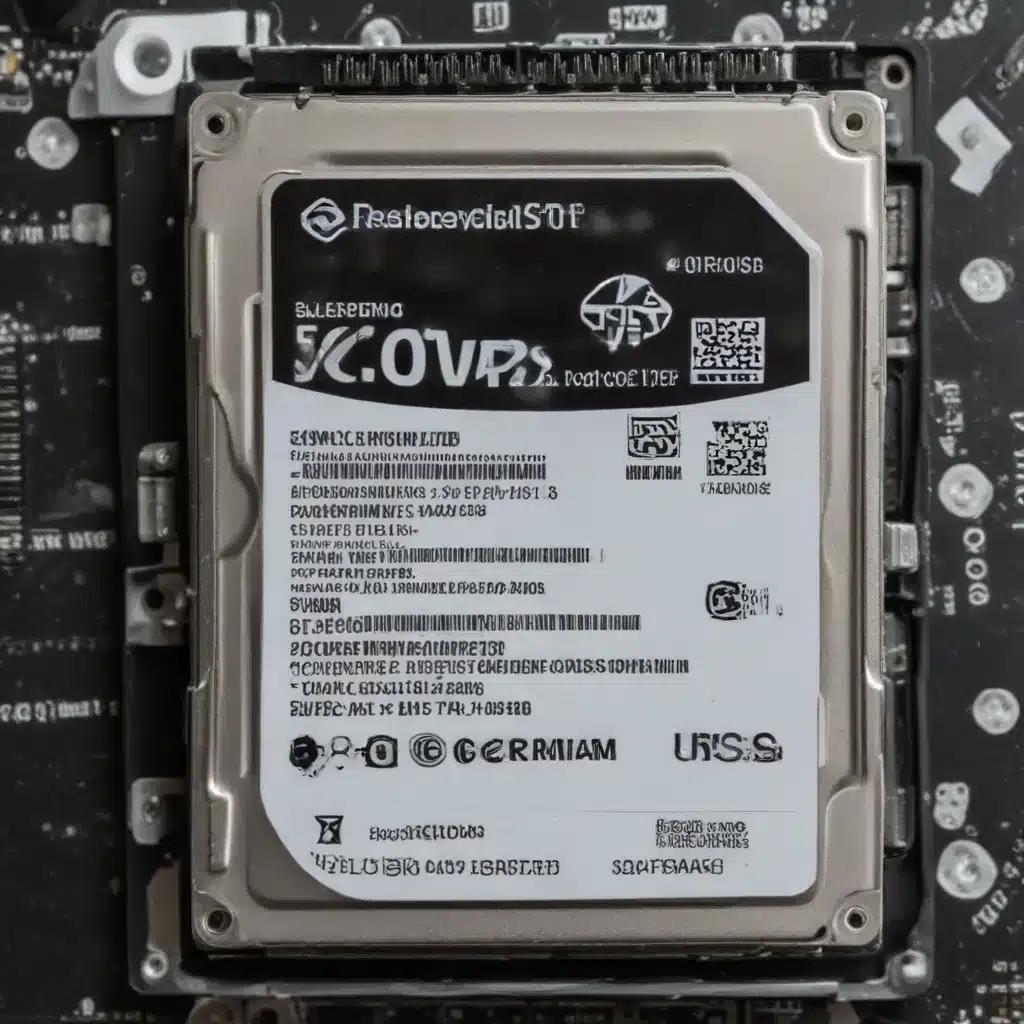
As an experienced IT professional, I’ve encountered numerous cases of corrupted or unbootable solid-state drives (SSDs), which can be a frustrating and daunting challenge for users. In this comprehensive article, we’ll dive deep into the common causes, diagnostic techniques, and effective solutions to address these storage-related issues.
Understanding SSD Corruption and Unbootable Scenarios
SSDs, while offering numerous advantages over traditional hard disk drives (HDDs), are not immune to various failure modes. From unexpected power outages and firmware bugs to physical damage and wear-and-tear, there are several factors that can lead to SSD corruption or an inability to boot from the affected drive.
One of the primary culprits behind unbootable SSDs is a corrupted or damaged file system. This can occur due to sudden power loss during critical operations, software crashes, or even malware infections. When the file system becomes compromised, the operating system may fail to recognize the drive or be unable to load the necessary boot files, resulting in an unbootable system.
Another common issue is SSD wear-out, which can manifest in various ways. As SSDs undergo repeated write cycles, their memory cells can degrade over time, leading to the inability to reliably store data. This wear-out process can ultimately result in complete SSD failure, making the drive unbootable and potentially unrecoverable.
Diagnosing Corrupted or Unbootable SSDs
When faced with a corrupted or unbootable SSD, it’s crucial to follow a structured diagnostic process to identify the root cause and determine the appropriate course of action.
Step 1: Assess the Boot Process
Begin by closely observing the boot sequence. If the system fails to boot or displays error messages, such as a “stop code” or “UNMOUNTABLE_BOOT_VOLUME,” it’s a clear indication of an issue with the SSD. In some cases, the drive may not even be detected by the BIOS or UEFI, further confirming the problem.
Step 2: Check for Physical Damage
Examine the SSD for any visible physical damage, such as cracks, dents, or signs of overheating. If the drive appears to be physically compromised, it’s likely that the data stored on it is unrecoverable, and the SSD will need to be replaced.
Step 3: Utilize Diagnostic Tools
Employ specialized tools to assess the health and integrity of the SSD. For Windows users, the built-in “chkdsk” command can be used to scan the drive for file system errors and attempt to repair them. For more advanced diagnostics, consider using third-party tools like CrystalDiskInfo or the Samsung Magician software (for Samsung SSDs) to analyze the drive’s S.M.A.R.T. (Self-Monitoring, Analysis, and Reporting Technology) data, which can provide valuable insights into the SSD’s condition.
Step 4: Examine the BIOS/UEFI Settings
If the SSD is not being recognized by the system, check the BIOS or UEFI settings to ensure that the drive is properly configured and enabled. Verify that the correct boot order is set, and consider resetting the BIOS/UEFI to its default settings if necessary.
Step 5: Isolate the Problematic Drive
If you have multiple storage devices in your system, try booting from a different drive to rule out any issues with the system itself. This will help you determine whether the problem is specific to the SSD or if there are broader system-related concerns.
Resolving Corrupted or Unbootable SSDs
Once you have identified the underlying cause of the SSD corruption or unbootability, you can proceed with the appropriate solution.
Data Recovery Techniques
If the SSD is not completely unresponsive and the data is still accessible, consider attempting data recovery. This may involve booting from a live Linux USB drive or using a data recovery software like Acronis True Image or EaseUS Data Recovery Wizard. These tools can often access and extract files from a corrupted or unbootable SSD, allowing you to salvage important data.
Rebuilding the File System
If the file system is the primary issue, you may be able to rebuild it using a system repair tool. In Windows, the “chkdsk” command can be used to scan and attempt to repair the file system. If this is unsuccessful, you may need to resort to more advanced tools like the Windows Recovery Environment (WinRE) or a third-party partition management software.
SSD Replacement
In cases where the SSD is physically damaged or experiencing significant wear-out, the only viable solution may be to replace the drive. Ensure that you have a recent backup of your data before attempting to replace the SSD, as the data on the corrupted drive may be unrecoverable.
When replacing the SSD, it’s important to choose a reliable and high-quality replacement. As mentioned in the source content, many users recommend sticking with reputable brands like Samsung, which are known for their quality and performance.
Preventive Measures
To minimize the risk of SSD corruption or unbootability, consider implementing the following preventive measures:
- Maintain Regular Backups: Regularly back up your data to an external storage device or cloud-based service to ensure that you can recover your files in the event of an SSD failure.
- Implement Power Protection: Use a high-quality uninterruptible power supply (UPS) or surge protector to safeguard your system against unexpected power outages, which can lead to file system corruption.
- Monitor SSD Health: Utilize diagnostic tools like CrystalDiskInfo or the manufacturer’s software to regularly monitor the health and wear-out status of your SSD. This can help you identify potential issues before they become critical.
- Optimize SSD Usage: Avoid excessive write operations, such as constant file transfers or extensive virtual memory usage, which can accelerate the wear-and-tear on your SSD.
By following these diagnostic steps and resolution strategies, you’ll be well-equipped to tackle corrupted or unbootable SSD issues, minimizing data loss and ensuring the long-term reliability of your storage solutions.
If you’re facing an SSD-related challenge and require further assistance, don’t hesitate to visit IT Fix for additional resources and expert guidance.












